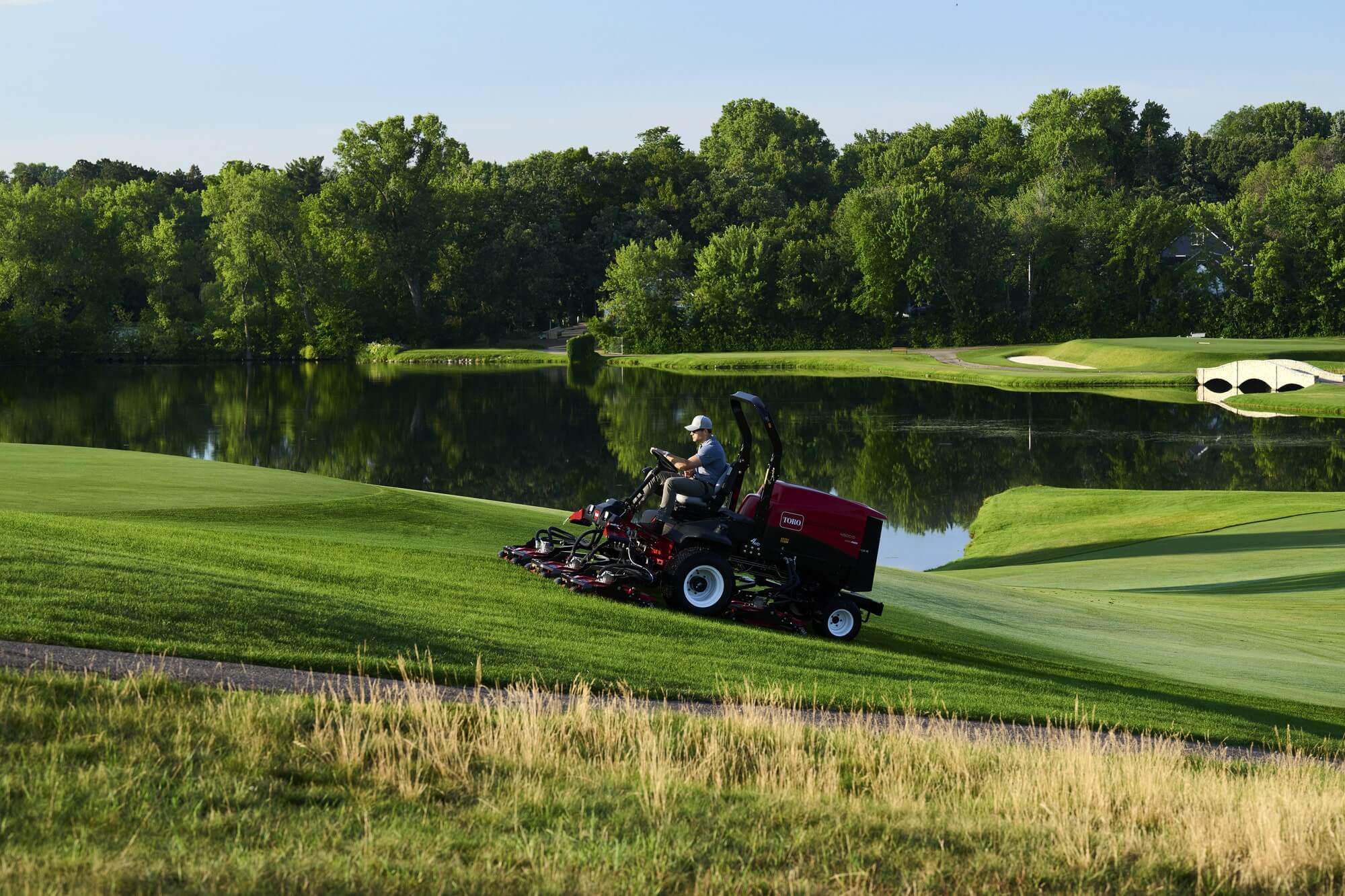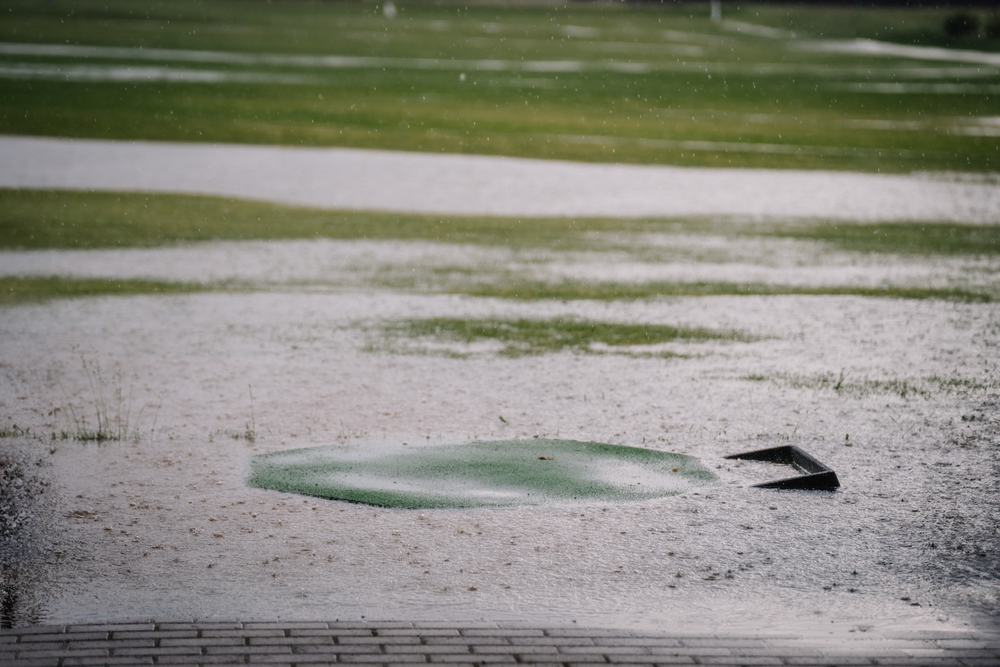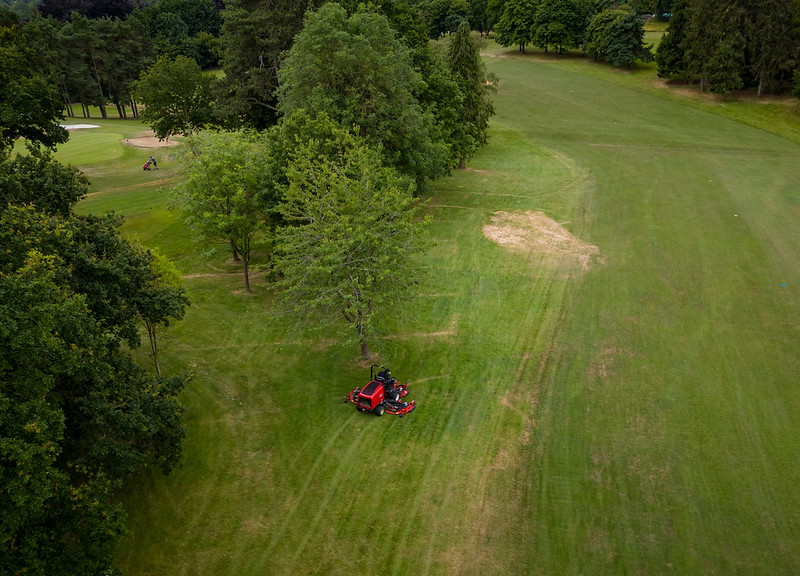Acclimatising to our changing climate: How is climate change impacting turf management strategies?
For those working in the golf and turf care industry, climate change isn’t just something we hear about on the news – it’s now part and parcel of our everyday, and its impact can be readily felt at golf courses, football clubs, and other sports venues across the UK and Ireland.

Extreme weather – a direct impact of our warming climate – has seen greenkeepers, course managers, and grounds teams grapple with unpredictable weather patterns, as well as increasing temperatures during summer, and wetter conditions throughout the winter.
As Geoff Webb, Chief Executive at the Grounds Management Association, has previously pointed out:
“We need to continue to educate grounds staff and plan now to ensure that as a sector, we’re equipped to deal with what lies ahead.”
But what lies ahead? While we know climate change is associated with hot weather, droughts, and record temperatures, it’s important to note that extreme rainfall and potential flooding are also significant consequences of climate change.
How does climate change cause increased rainfall and flooding?
In the UK, we’ve always experienced variable amounts of rain. So much so, predictably unpredictable weather has become part of our national character. But the staggering increase in rainfall over the last 12 to 18 months cannot be ignored.
In the 12 months prior to February 2024, England and Wales recorded its highest rainfall since 1766, and the cause is clear: climate change. Warmer air holds more water, so as temperatures rise, so will rainfall, both in volume and intensity.
Alongside hotter temperatures, heavier rainfall necessitates new turf management strategies and innovative solutions, as greenkeepers and grounds teams look to mitigate the impacts of climate change and their own club’s impact on the environment – now and in the future.

Does climate change impact turf management?
One thing worth noting, however, is that the actual change we experience as a result of climate change will be varied and highly localised. We’ve previously covered the topic of microclimates, the presence of shows that extreme weather will affect different parts of the UK in different ways – but also it has the potential to affect the same parts of the UK in different ways.
Indeed, there can be large disparities in rainfall between two sites that are only a couple of miles away. How each region is affected will be down to geographic and topographic variabilities, including aspect, altitude, and how far the area is from the sea.
Thus, a links course on the Scottish coast, for instance, is going to be affected differently to, say, West Monmouthshire Golf Club, which has a maximum elevation of 463m – the highest in the UK.
Managing turf under extreme weather conditions
In light of these differences, all turf professionals must be attuned to the effects of global warming and prepare for extreme weather, including more intense rainfall events, heatwaves, droughts, and disease – all of which can impact soil health and turf quality. The answer lies in accurate anticipation and in utilising the right practices to protect your prized turf.
How to prepare for intense rainfall events
Heavy rainfall can result in waterlogged soils, making it difficult for grass roots to access oxygen, which is needed for growth. Sports turf surfaces – football and rugby pitches, golf course fairways and greens, and cricket grounds, for instance – are at greater risk of flooding and, in turn, soil erosion, damage, and nutrient loss that occurs as a result.
According to a study by Zurich, around 42 percent of all English football grounds could face multiple extreme weather events by 2050, as the threat of climate change-related weather events increases. And of the 92 stadiums in the top English leagues, 39 have been identified as at high risk from at least three of four the main climate hazards: flooding, extreme rainfall, drought, and windstorms.
The study highlights the need for clubs to prepare and adapt to avoid potential disruptions, damaged stadiums, and water-logged pitches – and the best way to do that is implementing effective drainage systems or improving existing drainage by integrating larger water storage options.
By successfully aerating soil, moreover, turf professionals can enhance the soil’s structure, increase water infiltration, and improve the soil’s ability to retain moisture when it needs to.
Another effective way to prepare for intense rainfall events is by using weather forecasting tools. These handy, predictive tools help greenkeepers and turf professionals anticipate – and, thus, prevent damage from – changes in weather by detailing weather patterns specific to the club’s area and topography, as well as through soil moisture testing measures.
How to protect turf from rising temperatures and drought
On the other hand, rising temperatures and prolonged periods of drought and absence from rainfall can cause turfgrass dehydration and potential dieback of grasses, plants, and sward.
Each turfgrass species will have an optimum temperature it’s ‘happy’ at; however, once temperatures start encroaching on or, indeed, overtake the species’ upper threshold, then more stress and damage can occur in the turf, both in the leaf and in the roots, which makes weeds more likely to outcompete desirable grass species.
Higher temperatures will also negatively impact turf health by altering the distribution and prevalence of different pest populations. New pests, encouraged by warmer weather patterns, bring with them a host of new turf management challenges – not least accompanying diseases, which can spread more easily if higher overnight temperatures prevent natural cooling.
Additionally, cool-season grasses may struggle to survive in hot weather spells, especially over winter, so it’s important turf professionals act now by selecting and planting more resilient varieties that thrive under hotter, tougher conditions.
Genotypic variation is important for climate resilience; greenkeepers and grounds teams should begin by identifying more resilient turf grasses, such as couch grasses, which are more drought tolerant and are less impacted by higher soil salinity – a factor that will become increasingly important if potable water is reserved for drinking use only in the future.

Why sustainable turf management practices are crucial to combat climate change
Pesticide use and water consumption through irrigation will naturally increase when temperatures rise, so taking preventative measures, like planting drought resistant grass, raising cutting heights during high-stress periods, integrated pest management (IPM), and other sustainable turf management practices, can reduce the site’s environmental impact while also promoting biodiversity and creating a healthier landscape.
Indeed, sustainable turf care and landscaping practices are essential to address climate challenges. Using organic fertilisers, for instance, can improve soil health and reduce synthetic chemical reliance, slowly releasing nutrients in the soil and preventing leaching.
To use less water, club’s should invest in efficient irrigation systems, including those that harness smart controllers like Toro’s Lynx Central Control system – crucial tools for water conservation.
This clever technology reduces waste by giving greenkeepers and grounds teams more control, while delivering precise amounts to the root zone, right down to the millimetre.
Electric and battery-powered turf care machinery are understandably gaining traction – and, naturally, clubs and venues all over the UK are turning to green machines like Toro’s Greensmaster eTriFlex 3370 and Groundsmaster 3200 to reduce fossil fuel consumption and greenhouse gas emissions.
Moreover, keeping turf healthy with more environmentally friendly machines can create a doubling-effect, as your healthy turf will then sequester (absorb) more carbon dioxide, reducing your club’s impact on the environment even further!
At Reesink, we understand the importance of developing and promoting sustainable turf management practices and solutions, including zero-emission equipment, to reduce the environmental impact of our industry.
If you’d like to learn more about how we can support your turf or landscape management strategy, give us a call on 01480 226800.